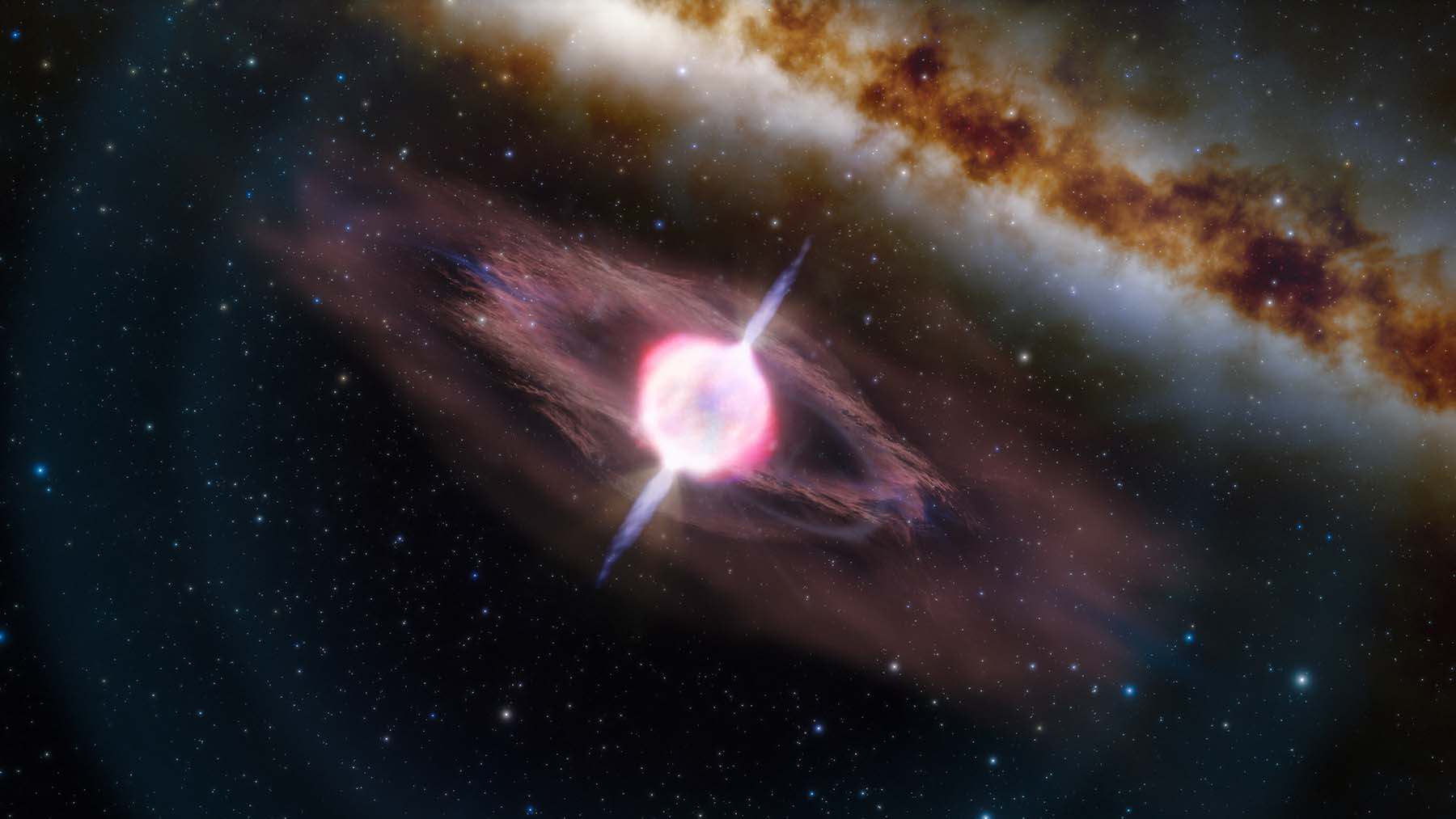NOIRLab: Astronomers Uncover Briefest Supernova-Powered Gamma-Ray Burst

This illustration depicts a collapsing star that is producing two short gamma-ray jets. Credit: International Gemini Observatory/NOIRLab/NSF/AURA/J. da Silva Image processing: M. Zamani (NSF’s NOIRLab)
Astronomers have discovered the shortest-ever gamma-ray burst (GRB) caused by the implosion of a massive star. Using the international Gemini Observatory, a Program of NSF’s NOIRLab, astronomers identified the cause of this 0.6-second flurry of gamma rays as a supernova explosion in a distant galaxy. GRBs caused by supernovae are usually more than twice as long, which suggests that some short GRBs might actually be imposters — supernova-produced GRBs in disguise.
Gamma-ray bursts (GRBs) are among the brightest and most energetic events in the Universe, but scientists are still figuring out exactly what causes these fleeting events [1]. Astronomers divide GRBs into two broad categories based on their duration. Short GRBs blaze into life in less than two seconds and are thought to be caused by the merging of binary neutron stars [2]. Those that last longer are classified as long GRBs, and have been associated with supernova explosions caused by the implosions of massive stars [3]. However, the recent discovery of the shortest-ever GRB produced during a supernova shows that GRBs don’t fit neatly into the boxes astronomers have created for them.
“This discovery represents the shortest gamma-ray emission caused by a supernova during the collapse of a massive star,” commented Tomás Ahumada, who led this research and is a PhD candidate at the University of Maryland and astronomer at NASA’s Goddard Space Flight Center. “It lasted for only 0.6 second, and it sits on the brink between a successful and a failed gamma-ray burst.”
The team believes that this and some other supernova-related GRBs are appearing short because the jets of gamma rays that emerge from the collapsing star’s poles aren’t strong enough to completely escape the star — almost failing to produce a GRB — and that other collapsing stars have such weak jets that they don’t produce GRBs at all.
This discovery could also help explain an astronomical mystery. Long GRBs are associated with a specific type of supernova (called Type Ic-BL). However, astronomers observe many more of these supernovae than long GRBs. This discovery of the shortest GRB associated with a supernova suggests that some of these supernova-caused GRBs are masquerading as short GRBs thought to be created by neutron-star mergers, and are therefore not getting counted as the supernova kind.
